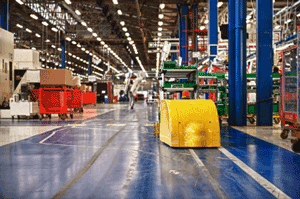 Merchants in 2015 are faced with major challenges in fulfilling orders from multiple channels, including web, mobile, in store and catalog, and doing so in increasingly rapid fashion. As customer expectations of immediacy continue to rise, driven by Amazon and others, two-day shipping has become more of a standard expectation—often free—with even more rapid fulfillment options gaining momentum as well. Previous day delivery, anyone?
Merchants in 2015 are faced with major challenges in fulfilling orders from multiple channels, including web, mobile, in store and catalog, and doing so in increasingly rapid fashion. As customer expectations of immediacy continue to rise, driven by Amazon and others, two-day shipping has become more of a standard expectation—often free—with even more rapid fulfillment options gaining momentum as well. Previous day delivery, anyone?
Many retailers, both traditional and pure-play online, have experienced tremendous growth in ecommerce sales. Along with this growth, however, comes a large increase in the volume of order processing, as well as a decrease in the number of items per order, typically one or two items each. These so-called “each” or “piece” orders can be very labor intensive and expensive because of the high labor component, including training and high worker turnover.
“Along with booming ecommerce, you’ve got the same-day delivery thought process, with consumers wanting more convenience and faster delivery,” said John Kemp, owner of Kemp Systems and Associates, a material handling consultancy. “This focus on getting things out the door more quickly can lead to docks being more congested as the volume of orders increases but with fewer large orders.”
This issue has led the Material Handling Institute to promote the training of technical school students in order processing and material handling techniques, as there is a shortage of these types of workers. “With ecommerce, you need more people than what traditional retail operations require,” Kemp said.
To make the magic happen, distribution centers now find themselves in a new role, serving as the primary connection between companies and their customers, putting additional strain on already overtaxed facilities. Increased volume, deals and shipping promotions frequently require retailers to be able to fulfill fluctuating volumes of online orders for delivery to consumers within 24–48 hours.
DC Automation Evolving to Address Demand, Reduce Errors
Kevin Thompson, distribution systems manager at outdoor outfitter Cabela’s, said because the company started in catalogs that ecommerce order fulfillment growth has not been the main driver for automation. “It has been reducing labor, packaging, and postage expense by right sizing our outbound packages, moving more volume to bags, and increased automation for packing,” Thompson said.
He said automation has helped Cabela’s address the growing demand for shortened time to customer by increasing the number of units that can be processed per day, allowing its DCs to get more out the door faster. “This has another benefit— the increase in volume helps us increase our case picks and thus reduce mis-picks as well,” he said.
Among other things, Cabela’s has implemented shipping sorter automation, which sorts parcels and cartons for small package and TL/LTL outbound loads, tilt tray sorters for packing sortation, auto boxing and auto bagging.
Troy Van Wormer, vice president of operations for nutraceutical seller iHerb, said the company’s goods-to-person automation system has helped cut down on mispicks by showing associates on screen the order number and what items are supposed to be included. “They may see a wrong item when picking their unit, so it provides a double check,” Van Wormer said. “The person with the last pick is required to make sure everything is correct.”
An additional check on order accuracy in iHerb’s system, Van Wormer said, is its ability to weigh the completed order and let pickers know if anything is off. “It compares the actual weight of the order to what it’s supposed to be, including the box weight, and if it’s not within a certain tolerance, the order is kicked off to the quality control area,” he said.
Automation Systems for Every Budget
Order fulfillment automation systems are becoming more modular and standardized, and thus simpler, in their design. This has reduced the need for customized installations, making it easier and more affordable to purchase and install an off-the-shelf (OTS) system.
For retailers using a basic container footprint, an OTS automation system can minimize the engineering and simulation phases, and shorten the analysis time for the project team. It also means fewer facility changes, such as relocating existing storage equipment.
“This can mean planning, designing and installing a new project in a few months versus a couple of years, and realizing an ROI much faster,” Kemp said. “You can start with the basic components of storage and retrieval, and if you need to increase it, you can add another module or a shuttle.”
With custom projects, Kemp said, companies can get far into the process and have to reboot for a variety of reasons: The project team changes, the business has changed, or a new product line is introduced. “OTS makes it easier to come up with what you want to do and get it installed without a lot of start-up phase work and changes to the facility,” he said.
